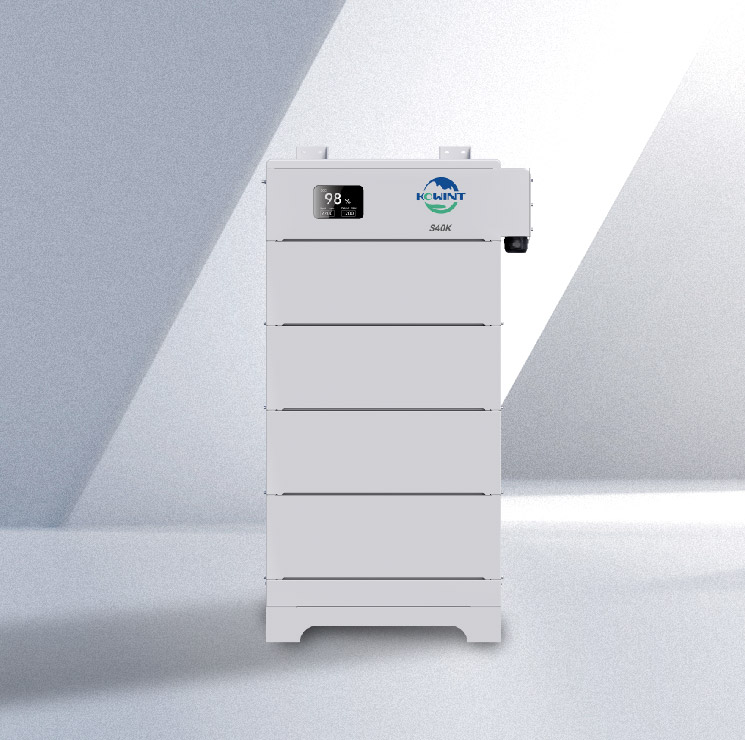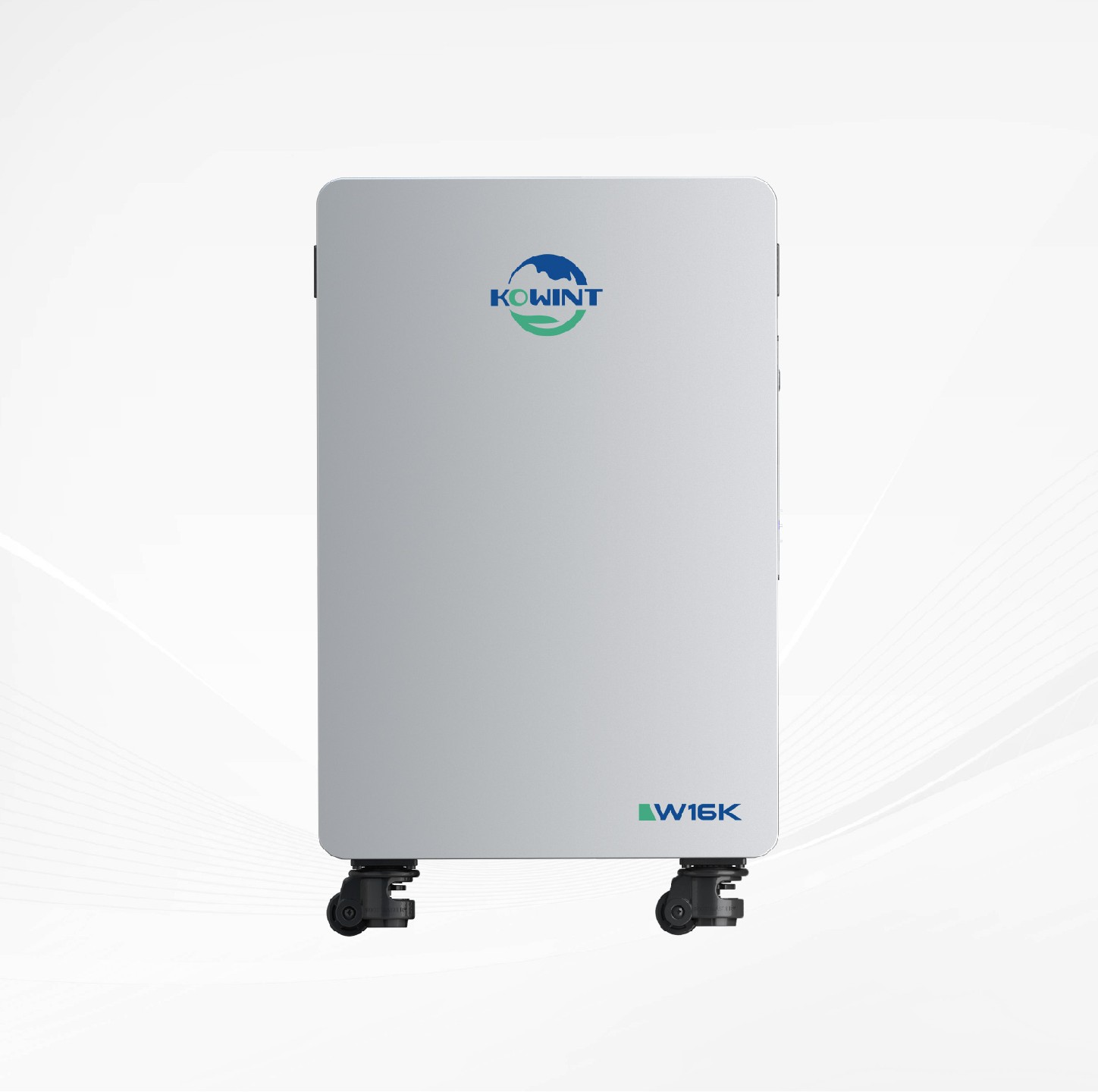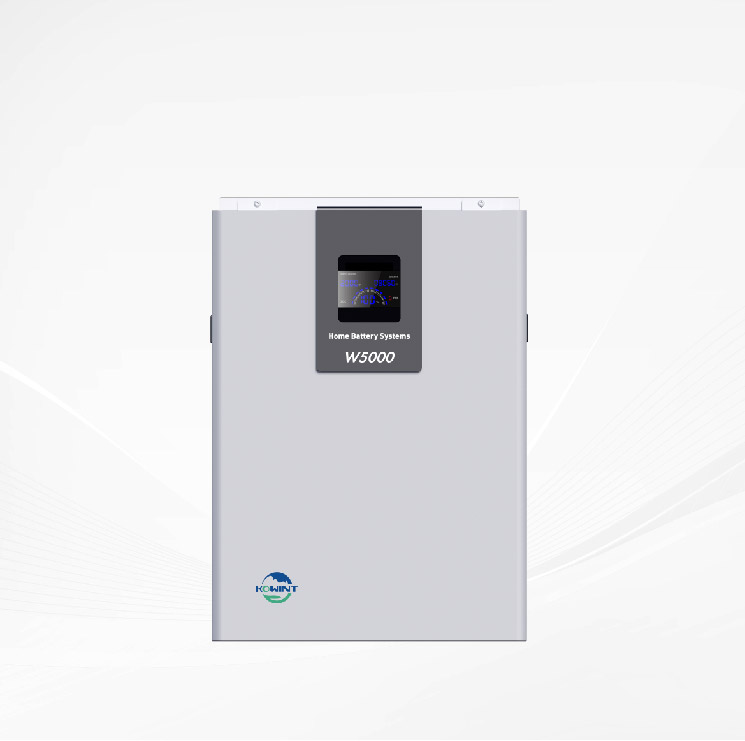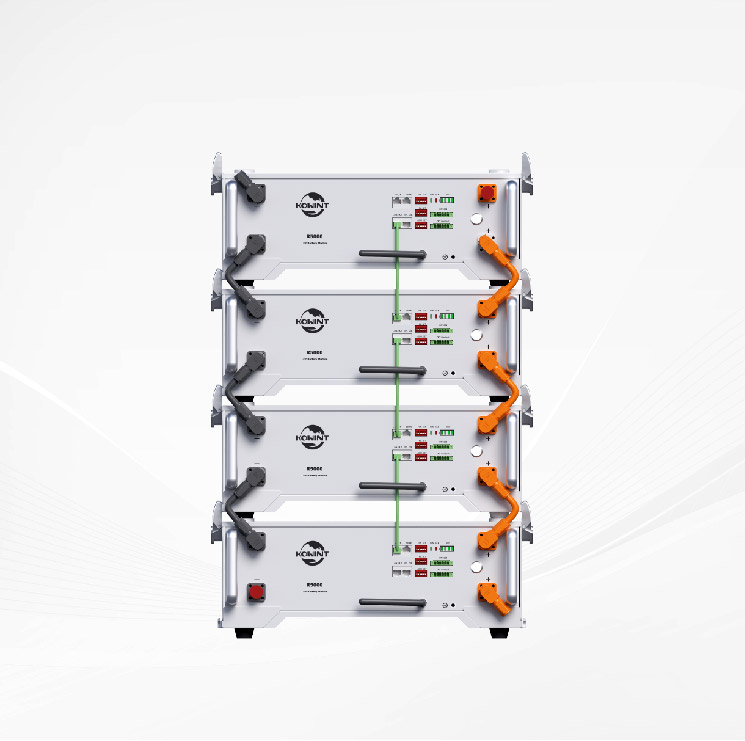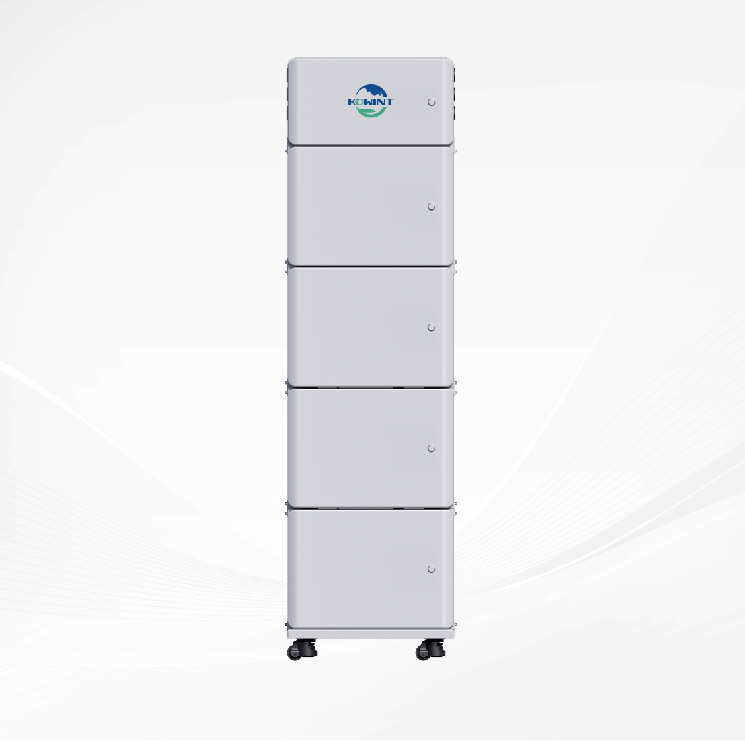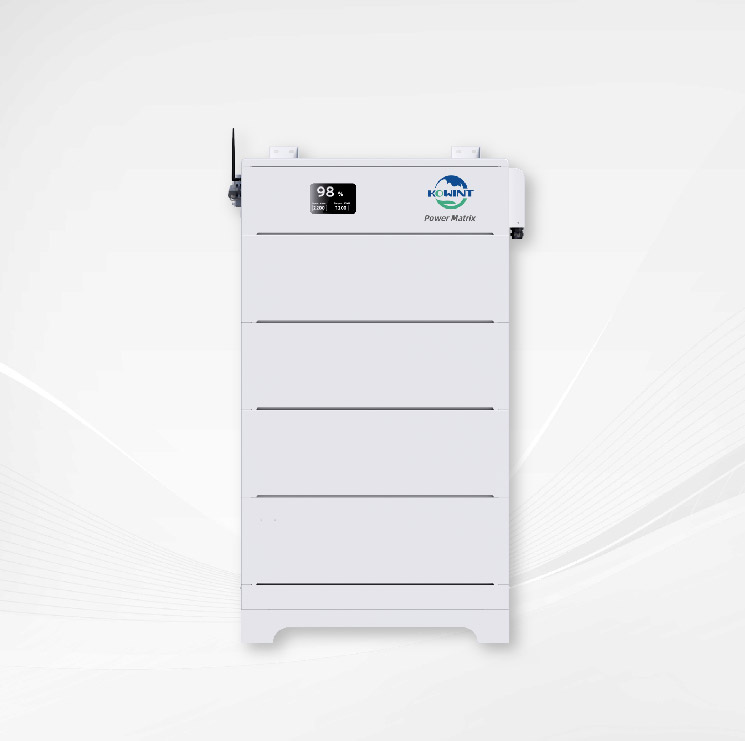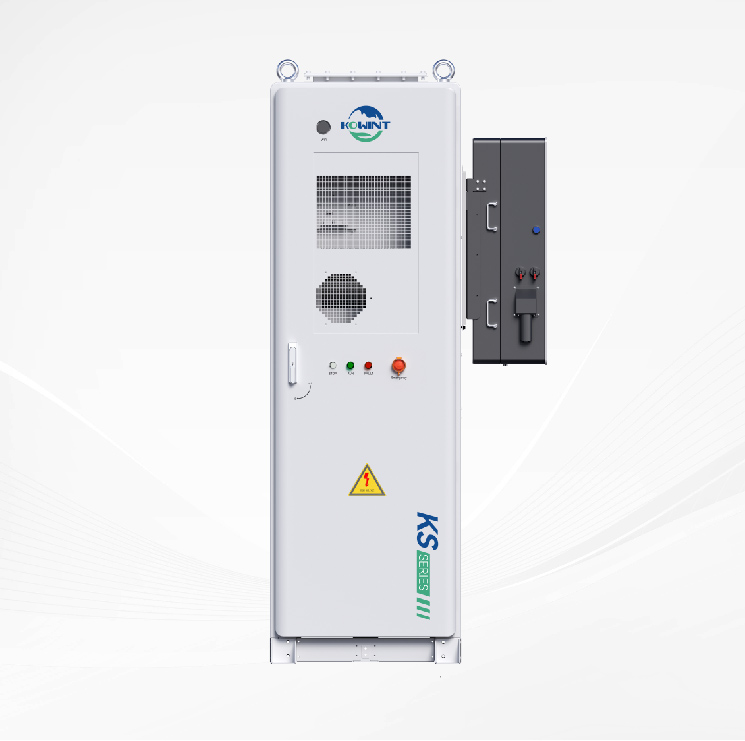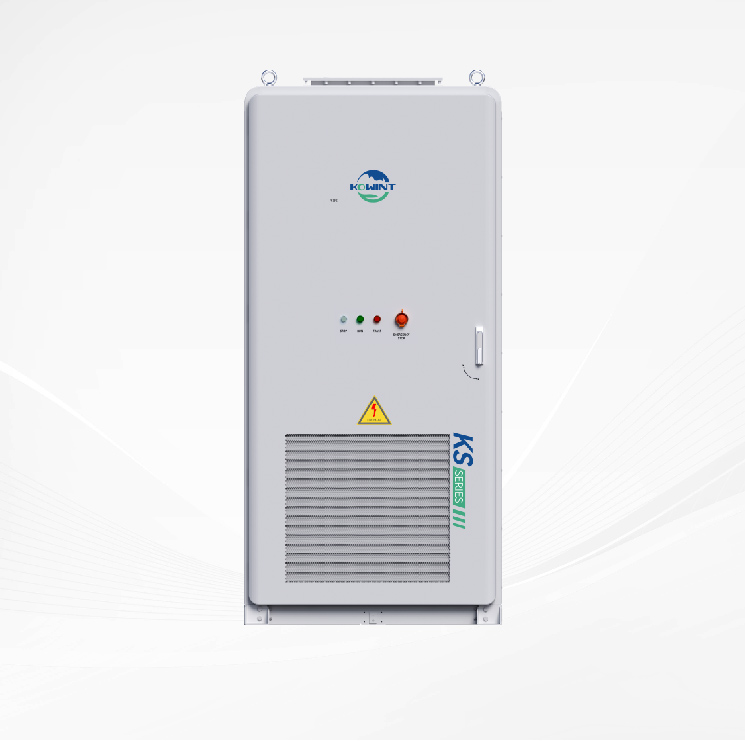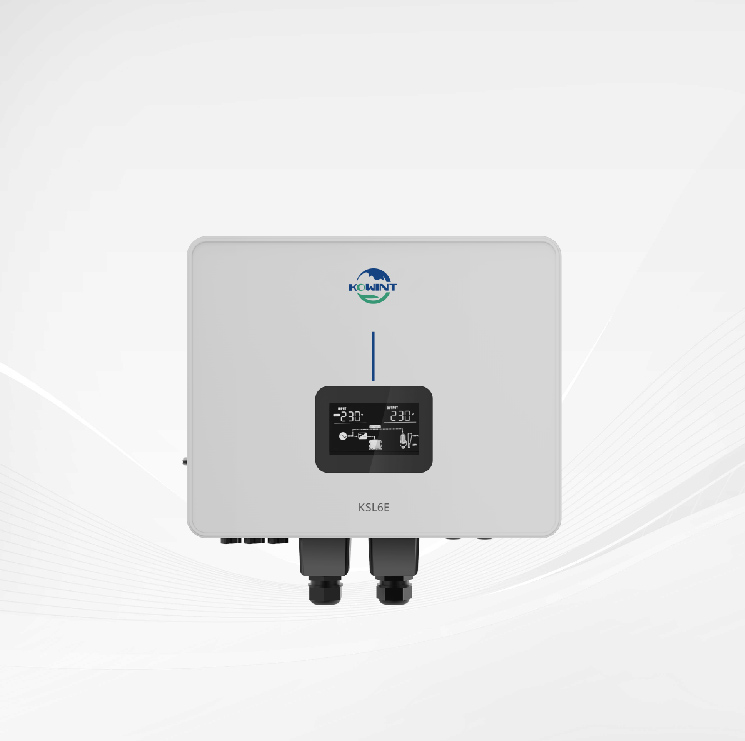Empowering Your Home: A Comprehensive Guide to DIY Powerwall Projects
In an era where sustainable energy solutions are becoming increasingly imperative, the Powerwall has emerged as a beacon of hope for those seeking to harness renewable energy for their homes. However, the cost of commercially available Powerwalls may be prohibitive for some. This is where the concept of a DIY Powerwall shines, offering an affordable and customizable alternative that empowers individuals to take control of their energy usage. In this comprehensive guide, we delve into the world of DIY Powerwalls, exploring the technology, planning process, construction, integration, safety considerations, and more.
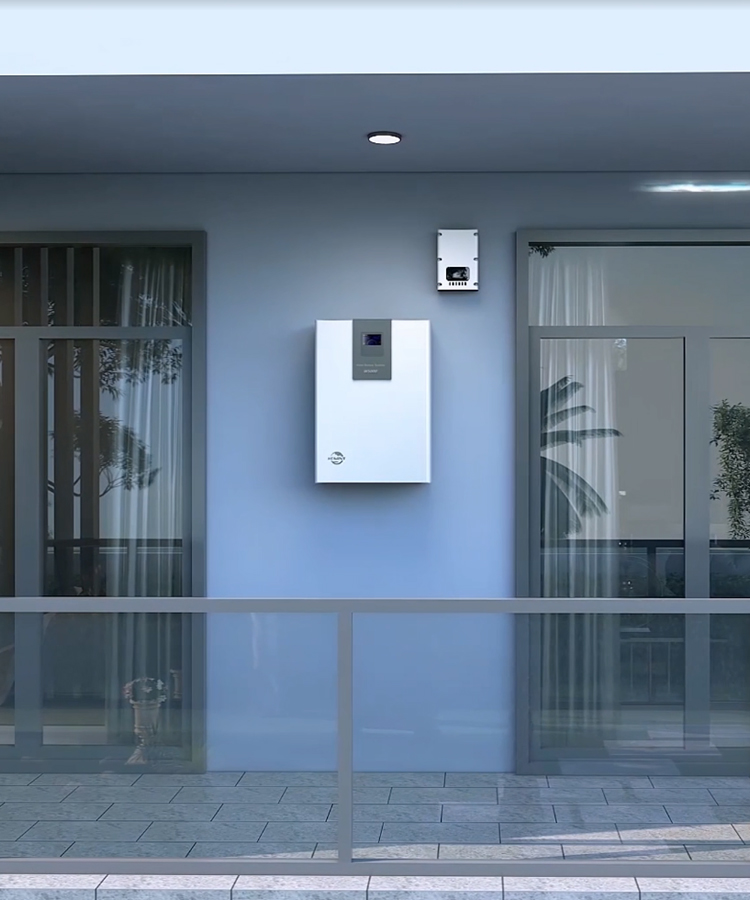
Understanding Powerwall Technology
The Powerwall, a revolutionary product developed by Tesla, has transformed the landscape of home energy storage. At its core lies a sophisticated blend of technology aimed at providing efficient and sustainable energy solutions. Understanding the intricacies of Powerwall technology is essential for embarking on a successful DIY project. Let's delve deeper into the components and functionality of the Powerwall:
Lithium-Ion Batteries:
l The cornerstone of the Powerwall is its lithium-ion battery pack. These batteries are renowned for their high energy density, allowing for compact yet powerful energy storage solutions.
l Lithium-ion batteries are rechargeable, making them ideal for storing energy generated from renewable sources such as solar panels or wind turbines.
l Tesla utilizes cutting-edge battery technology, including advanced chemistry and cell design, to optimize performance, longevity, and safety.
Components of a Powerwall System:
l Inverters: Convert the direct current (DC) electricity stored in the battery into alternating current (AC) electricity used by household appliances.
l Battery Management System (BMS): Monitors and manages the state of charge, temperature, and voltage of individual battery cells to ensure optimal performance and safety.
l Monitoring Systems: Provide real-time data on energy production, consumption, and storage, empowering homeowners to make informed decisions about their energy usage.
l Enclosure and Cooling Mechanisms: The Powerwall is housed in a durable enclosure designed to protect the internal components from environmental factors. Cooling systems regulate the temperature of the batteries to prevent overheating and maximize efficiency.
Functionality and Capabilities of a Powerwall:
l Energy Storage: The primary function of the Powerwall is to store excess energy generated from renewable sources or during off-peak hours when electricity rates are low.
l Backup Power: In the event of a grid outage, the Powerwall automatically switches to backup mode, providing uninterrupted power to essential appliances and devices.
l Time-Based Control: Powerwall systems can be programmed to optimize energy usage based on time-of-use electricity pricing, maximizing cost savings for homeowners.
l Grid Services: Through advanced software algorithms, Powerwalls can participate in grid services such as demand response and frequency regulation, contributing to a more stable and resilient energy grid.
By understanding the technology behind the Powerwall, DIY enthusiasts can make informed decisions when selecting components, designing their systems, and troubleshooting issues. This knowledge lays the foundation for a successful DIY Powerwall project, empowering individuals to take control of their energy future.
Planning Your DIY Powerwall Project
Embarking on a DIY Powerwall project requires careful planning and consideration of various factors to ensure success. From assessing your energy needs to budgeting for components, meticulous planning lays the groundwork for a seamless construction process. Let's delve into the essential steps of planning your DIY Powerwall project:
Assessing Energy Needs and Usage:
l Start by evaluating your household's energy consumption patterns, including peak usage times and average daily consumption.
l Consider factors such as the size of your home, the number of occupants, and the types of appliances and electronics used.
l Analyze historical energy bills to gain insights into your energy usage trends and identify areas where energy efficiency improvements can be made.
Calculating Required Battery Capacity:
l Based on your energy consumption data, calculate the amount of energy storage capacity needed to meet your household's needs.
l Take into account factors such as peak demand, desired backup power duration during outages, and potential future increases in energy usage.
l Utilize online calculators or consult with experts to determine the optimal battery capacity for your specific requirements.
Selecting Appropriate Battery Cells and Components:
l Research and evaluate different types of lithium-ion battery cells available on the market, considering factors such as energy density, cycle life, and cost.
l Choose battery cells that are compatible with your desired voltage and capacity requirements, ensuring they meet safety and performance standards.
l Select other essential components such as inverters, BMS, enclosures, and monitoring systems, ensuring compatibility and reliability.
Budgeting for the Project:
l Develop a comprehensive budget that includes costs for battery cells, components, tools, and labor.
l Factor in additional expenses such as shipping costs, taxes, and any unforeseen expenses that may arise during the construction process.
l Explore cost-saving strategies such as purchasing components in bulk, comparing prices from multiple suppliers, and considering refurbished or second-hand equipment.
Designing the System Layout:
l Create a detailed plan for the layout and configuration of your DIY Powerwall system, considering factors such as available space, electrical requirements, and safety considerations.
l Sketch out the placement of battery modules, inverters, BMS, and other components within the designated installation area.
l Ensure adequate ventilation and cooling to prevent overheating and optimize the performance of the system.
By meticulously planning your DIY Powerwall project, you can ensure that it meets your energy needs, budget constraints, and safety requirements. This groundwork sets the stage for a successful construction phase, ultimately leading to a reliable and efficient home energy storage solution.

Sourcing Materials and Tools
Acquiring high-quality materials and tools is crucial for the success of your DIY Powerwall project. From selecting reliable suppliers to ensuring you have the necessary equipment for assembly, thorough sourcing sets the stage for a smooth construction process. Here's a detailed look at how to source materials and tools for your DIY Powerwall:
Finding Reliable Suppliers:
l Research reputable suppliers of lithium-ion battery cells, inverters, BMS, and other components required for your Powerwall project.
l Look for suppliers that offer high-quality products, competitive prices, and reliable customer support.
l Consider factors such as shipping times, return policies, and warranty coverage when choosing suppliers.
l Explore online marketplaces, specialty stores, and local distributors to compare options and find the best deals.
Selecting Battery Cells:
l Choose lithium-ion battery cells from reputable manufacturers known for their quality and reliability.
l Consider factors such as energy density, cycle life, discharge rate, and safety features when selecting battery cells.
l Verify the specifications and compatibility of battery cells with your Powerwall system design and voltage requirements.
l Check for certifications and compliance with safety standards to ensure the battery cells meet industry regulations.
Procuring Components and Accessories:
l Determine the specific components and accessories needed for your Powerwall project, such as inverters, BMS, busbars, and connectors.
l Source components from trusted suppliers that offer compatible products with the required specifications and performance capabilities.
l Consider purchasing pre-assembled kits or bundles that include all necessary components for simplified installation and compatibility assurance.
l Verify the availability of spare parts, replacement components, and accessories to facilitate future maintenance and repairs.
Gathering Tools and Equipment:
l Compile a comprehensive list of tools and equipment needed for assembling the Powerwall, including basic hand tools, power tools, and safety gear.
l Ensure you have tools for tasks such as battery cell assembly, soldering, wiring, drilling, and mounting components.
l Invest in specialized tools or equipment required for handling lithium-ion batteries safely, such as battery spot welders, cell testers, and insulation materials.
l Prioritize safety gear such as gloves, safety glasses, respirators, and fire extinguishers to mitigate risks associated with battery assembly and installation.
Considering Sustainability and Environmental Impact:
l Explore options for sourcing eco-friendly and sustainable materials for your DIY Powerwall project, such as recycled battery cells or components with minimal environmental impact.
l Research suppliers that prioritize sustainable practices, such as ethical sourcing, recycling programs, and carbon-neutral shipping options.
l Dispose of packaging materials and waste responsibly, recycling or repurposing materials whenever possible to minimize environmental impact.
l Incorporate energy-efficient design principles into your Powerwall system to maximize sustainability and reduce energy consumption over its lifecycle.
By carefully sourcing materials and tools from reliable suppliers and considering factors such as quality, compatibility, and sustainability, you can ensure the success of your DIY Powerwall project. Investing time and effort into sourcing the right components and equipment sets the stage for a reliable and efficient home energy storage system that meets your needs for years to come.
Building Your DIY Powerwall
With all the necessary materials and tools at hand, it's time to roll up your sleeves and start building your DIY Powerwall. This phase involves assembling battery modules, connecting components, and ensuring the system operates smoothly. Follow this detailed guide to navigate the construction process effectively:
Assembling Battery Modules:
l Lay out the lithium-ion battery cells according to your predetermined configuration, considering factors such as voltage, capacity, and space constraints.
l Use spot welders or soldering techniques to connect battery cells in series and parallel configurations, ensuring proper alignment and electrical connections.
l Install busbars, insulation materials, and thermal management components to facilitate efficient heat dissipation and electrical insulation.
l Test each battery module for continuity, voltage balance, and insulation integrity before proceeding to the next step.
Connecting Components:
l Mount inverters, BMS, and other components in the designated locations within the Powerwall enclosure, ensuring proper alignment and secure fastening.
l Connect battery modules to the BMS, ensuring correct polarity and wiring configuration to monitor and manage battery performance effectively.
l Wire inverters and other electrical components according to the system design, following wiring diagrams and safety guidelines to prevent short circuits or electrical hazards.
l Implement safety measures such as fuses, circuit breakers, and surge protectors to safeguard against overcurrent, overvoltage, and other electrical faults.
Testing and Calibration:
l Conduct thorough testing of the entire Powerwall system to ensure proper functionality and performance.
l Verify that battery cells are balanced and charging/discharging evenly, adjusting BMS settings as needed to optimize battery health and longevity.
l Test backup power functionality by simulating grid outages or disconnecting the Powerwall from the grid to ensure seamless transition and uninterrupted power supply.
l Monitor temperature, voltage, and current levels during testing, identifying any anomalies or irregularities that may indicate underlying issues requiring further investigation.
Troubleshooting and Optimization:
l Address any issues or discrepancies identified during testing, troubleshooting wiring, connections, or component failures as necessary.
l Optimize system settings and configurations to maximize energy efficiency, performance, and reliability.
l Fine-tune charge/discharge parameters, time-based control settings, and other parameters to align with your energy usage patterns and preferences.
l Document any modifications or adjustments made during the construction and testing phases for future reference and maintenance purposes.
Ensuring Safety and Compliance:
l Perform final safety checks and inspections to ensure compliance with relevant safety standards, codes, and regulations.
l Implement safety precautions such as warning labels, protective enclosures, and emergency shutdown procedures to mitigate risks associated with battery operation.
l Educate household members on proper usage, maintenance, and emergency procedures related to the Powerwall system to ensure safe and responsible operation.
l Regularly monitor and maintain the Powerwall system, conducting periodic inspections, testing, and maintenance tasks to ensure continued safety and performance.
By following these steps diligently and paying attention to detail, you can build a reliable and efficient DIY Powerwall that meets your energy storage needs while adhering to safety standards and best practices. With proper assembly, testing, and optimization, your DIY Powerwall can provide years of dependable service, contributing to a sustainable and resilient energy future for your home.
Installing and Integrating the DIY Powerwall
Installing and integrating your DIY Powerwall into your home's electrical system is a critical step that requires careful planning and execution. Proper installation ensures seamless operation and optimal performance of your home energy storage system. Follow these detailed steps to successfully install and integrate your DIY Powerwall:
Determining the Installation Location:
l Choose a suitable location for installing the Powerwall that meets safety requirements and allows for proper ventilation and access.
l Consider factors such as available space, proximity to electrical panels, and ease of maintenance when selecting the installation site.
l Ensure the installation location complies with local building codes, regulations, and safety standards regarding clearances, fire protection, and electrical wiring.
Preparing the Installation Site:
l Clear and clean the installation area, removing any obstacles, debris, or hazards that may impede the installation process.
l Install mounting brackets or racks securely to support the weight of the Powerwall and ensure stability during operation.
l Ensure adequate ventilation and airflow around the Powerwall enclosure to dissipate heat generated during operation and prevent overheating.
Connecting to the Electrical System:
l Shut off power to the electrical system at the main circuit breaker before beginning the installation to prevent electrical hazards.
l Install the necessary electrical conduits, wiring, and junction boxes to connect the Powerwall to the main electrical panel and household circuits.
l Follow wiring diagrams and manufacturer instructions to make proper electrical connections, ensuring correct polarity, grounding, and insulation.
l Test the electrical connections for continuity, voltage, and insulation integrity before energizing the system.
Integrating with Renewable Energy Sources:
l If integrating with solar panels or other renewable energy sources, install the necessary equipment such as solar inverters, charge controllers, and grid-tie equipment.
l Connect the renewable energy system to the Powerwall and main electrical panel, ensuring proper synchronization and compatibility between components.
l Configure system settings and parameters to optimize energy production, storage, and distribution based on renewable energy availability and household consumption patterns.

Commissioning and Testing:
l Power up the system and verify that all components are operational, including inverters, BMS, monitoring systems, and safety features.
l Monitor system performance and conduct comprehensive testing to ensure proper functionality, efficiency, and reliability.
l Verify backup power functionality by simulating grid outages or disconnecting the Powerwall from the grid to confirm seamless transition and uninterrupted power supply.
l Conduct final inspections and safety checks to ensure compliance with applicable regulations, standards, and manufacturer specifications.
Training and Maintenance:
l Provide training to household members on how to operate, monitor, and maintain the Powerwall system safely and effectively.
l Establish a regular maintenance schedule to inspect, clean, and service the Powerwall and associated components to ensure continued performance and longevity.
l Document installation details, system configurations, and maintenance activities for future reference and troubleshooting purposes.
By following these steps and guidelines, you can install and integrate your DIY Powerwall into your home's electrical system effectively and safely. Proper installation and integration ensure seamless operation, optimal performance, and reliable backup power in the event of grid outages or emergencies, empowering you to take control of your energy future.
Monitoring and Maintenance
Monitoring and maintaining your DIY Powerwall system are essential for ensuring its long-term reliability, efficiency, and safety. Regular monitoring allows you to track system performance, identify potential issues, and optimize energy usage. Similarly, routine maintenance helps prevent problems, prolongs the lifespan of components, and ensures the system operates at peak efficiency. Follow these detailed steps to effectively monitor and maintain your DIY Powerwall:
Setting Up Monitoring Systems:
l Install monitoring devices and software to track key performance metrics such as battery voltage, state of charge, temperature, and charging/discharging rates.
l Choose monitoring systems that provide real-time data and alerts, allowing you to monitor system health and performance remotely via computer, smartphone, or tablet.
l Configure monitoring parameters and thresholds to trigger alerts or notifications for critical events such as overcharging, over-discharging, or temperature anomalies.
l Regularly review monitoring data and analytics to assess energy production, consumption, and storage patterns, identifying opportunities for optimization and efficiency improvements.
Conducting Regular Inspections:
l Perform visual inspections of the Powerwall enclosure, wiring, and components to check for signs of damage, corrosion, or wear.
l Inspect electrical connections, terminals, and junction boxes for tightness, cleanliness, and proper insulation, tightening or reterminating connections as needed.
l Check ventilation openings, fans, and cooling systems to ensure they are free from obstructions and functioning properly to prevent overheating.
l Inspect battery modules for physical damage, bulging, or leaks, and check BMS readings to verify individual cell voltages and balance.
Testing and Calibration:
l Regularly test system functionality and performance by conducting charge/discharge cycles, load testing, and battery capacity tests.
l Verify the accuracy of monitoring sensors and instruments by comparing readings to known standards or calibrated equipment.
l Calibrate sensors, meters, and monitoring devices periodically to ensure accurate measurement and reporting of critical parameters such as voltage, current, and temperature.
l Use diagnostic tools and software to analyze system data and troubleshoot issues such as voltage sag, capacity degradation, or abnormal behavior.
Performing Preventive Maintenance:
l Clean and inspect battery terminals, connections, and surfaces regularly to remove dust, debris, or corrosion that may impair conductivity or cause electrical resistance.
l Check and replace air filters, cooling fans, and ventilation openings as needed to maintain proper airflow and cooling efficiency.
l Test and recalibrate safety features such as overcurrent protection, overvoltage protection, and temperature monitoring to ensure they operate reliably in case of emergencies.
l Replace worn or damaged components, such as fuses, circuit breakers, or wiring, and perform preventive maintenance tasks according to manufacturer recommendations and industry best practices.
Documentation and Record-Keeping:
l Keep detailed records of monitoring data, maintenance activities, repairs, and system modifications for future reference and troubleshooting.
l Document system configurations, settings, and calibration parameters to facilitate system upgrades, expansions, or repairs.
l Maintain a logbook or digital database of maintenance schedules, inspections, and service intervals to ensure timely and consistent maintenance of the Powerwall system.
l Review historical data and maintenance records regularly to identify trends, patterns, and recurring issues, allowing for proactive maintenance and continuous improvement of system performance.
By implementing a comprehensive monitoring and maintenance regimen, you can ensure the reliability, efficiency, and safety of your DIY Powerwall system for years to come. Regular monitoring allows you to detect issues early and take corrective action, while routine maintenance helps prevent problems and prolong the lifespan of components, ensuring your Powerwall operates at peak performance and delivers reliable backup power when needed.
Safety Considerations
Ensuring the safety of your DIY Powerwall project is paramount to protect yourself, your property, and your loved ones from potential hazards associated with electrical systems and lithium-ion batteries. By implementing comprehensive safety measures and adhering to best practices, you can mitigate risks and create a safe environment for the installation, operation, and maintenance of your Powerwall system. Here's a detailed guide to addressing safety considerations:
Proper Ventilation and Cooling:
l Install the Powerwall in a well-ventilated area with adequate airflow to dissipate heat generated during operation.
l Ensure there is sufficient clearance around the Powerwall enclosure to allow for proper ventilation and cooling of battery cells and electrical components.
l Monitor temperature levels regularly and implement additional cooling mechanisms such as fans or heat sinks if needed to prevent overheating.
Handling and Storage of Lithium-Ion Batteries:
l Exercise caution when handling lithium-ion battery cells to prevent physical damage, short circuits, or thermal runaway.
l Store battery cells in a cool, dry, and well-ventilated area away from flammable materials, direct sunlight, and sources of heat.
l Use insulated tools and protective equipment such as gloves and safety glasses when working with battery cells to minimize the risk of electrical shock or injury.
Fire Prevention Measures:
l Install smoke detectors, fire extinguishers, and fire suppression systems in the vicinity of the Powerwall installation to detect and extinguish fires quickly.
l Use fire-resistant materials for the Powerwall enclosure and surrounding structures to contain and prevent the spread of fires.
l Implement thermal barriers and insulation to protect adjacent surfaces from heat generated by the Powerwall and mitigate the risk of fire.
Electrical Safety Precautions:
l Disconnect power to the electrical system at the main circuit breaker before performing any installation, maintenance, or repair work on the Powerwall.
l Use insulated tools, gloves, and safety equipment when working with live electrical circuits to prevent electrical shock or electrocution.
l Follow proper wiring techniques, grounding procedures, and electrical codes to ensure safe and compliant installation of the Powerwall system.
Handling and Disposal of Battery Components:
l Handle lithium-ion battery cells with care to avoid punctures, crushing, or physical damage that may lead to electrolyte leakage or thermal runaway.
l Dispose of damaged or defective battery cells properly according to local regulations and guidelines for hazardous waste disposal.
l Recycle or repurpose old or unused battery cells through certified recycling programs to minimize environmental impact and promote sustainability.
Emergency Procedures and Evacuation Plans:
l Develop and communicate emergency procedures and evacuation plans to household members, outlining steps to take in the event of a fire, electrical shock, or other emergencies.
l Post emergency contact information, safety instructions, and evacuation routes near the Powerwall installation for quick reference during emergencies.
l Conduct regular drills and practice emergency response scenarios to ensure readiness and preparedness to handle potential hazards effectively.
Compliance with Regulations and Standards:
l Familiarize yourself with local building codes, regulations, and safety standards governing the installation and operation of home energy storage systems.
l Ensure your DIY Powerwall project complies with applicable safety requirements, permit regulations, and inspection procedures to avoid fines, penalties, or legal liabilities.
l Consult with certified professionals or qualified electricians if you are unsure about safety-related issues or compliance with regulatory requirements.
By prioritizing safety and implementing comprehensive safety measures throughout the planning, installation, and operation of your DIY Powerwall system, you can minimize risks and ensure the well-being of yourself, your family, and your property. Vigilance, education, and adherence to best practices are key to creating a safe and secure environment for harnessing the benefits of home energy storage while mitigating potential hazards and risks.
Legal and Regulatory Considerations
Navigating the legal and regulatory landscape surrounding DIY Powerwall projects is essential to ensure compliance with local laws, codes, and safety standards. Failing to adhere to these requirements can result in fines, penalties, or even legal liabilities. Here's a detailed overview of the key legal and regulatory considerations to keep in mind:
Permits and Approvals:
l Research and obtain necessary permits and approvals from local authorities, building departments, or utility providers before installing your DIY Powerwall.
l Determine if permits are required for electrical work, structural modifications, or energy storage installations, and submit applications accordingly.
l Ensure compliance with zoning regulations, setback requirements, and other land-use restrictions that may apply to your Powerwall installation.
Compliance with Electrical Codes:
l Familiarize yourself with national and local electrical codes, such as the National Electrical Code (NEC) in the United States, that govern the design, installation, and operation of electrical systems.
l Ensure your DIY Powerwall system complies with code requirements for wiring methods, grounding, overcurrent protection, and equipment installation to ensure safety and reliability.
l Consult with qualified electricians or electrical engineers if you are unsure about code compliance or need assistance interpreting code requirements.
Insurance Considerations:
l Review your homeowner's insurance policy to understand coverage for home energy storage systems and related liabilities.
l Inform your insurance provider about the installation of a DIY Powerwall and ensure that your policy adequately covers the system against risks such as fire, theft, and property damage.
l Consider purchasing additional insurance coverage or liability protection if necessary to mitigate risks associated with the Powerwall installation and operation.
Grid Connection and Interconnection Agreements:
l Determine if interconnection agreements or contracts are required with your utility provider for connecting your Powerwall to the electrical grid.
l Understand the utility's requirements, tariffs, and fees for grid interconnection, net metering, or participation in demand response programs.
l Ensure compliance with utility interconnection standards, safety protocols, and metering requirements to facilitate seamless integration of your Powerwall with the grid.
Compliance with Safety Standards:
l Adhere to industry safety standards and guidelines for the design, installation, and operation of home energy storage systems, including those established by organizations such as the Institute of Electrical and Electronics Engineers (IEEE) and Underwriters Laboratories (UL).
l Ensure that components used in your DIY Powerwall project, such as battery cells, inverters, and BMS, comply with relevant safety certifications and standards to mitigate risks associated with fire, electrical shock, or other hazards.
l Verify that your Powerwall system meets safety requirements for battery storage, electrical wiring, and structural integrity to protect against potential accidents or failures.
Legal Liabilities and Responsibilities:
l Understand your legal liabilities and responsibilities as a homeowner and DIY enthusiast undertaking a Powerwall project, including obligations related to safety, maintenance, and compliance.
l Take appropriate precautions to minimize risks associated with the installation and operation of your Powerwall, including implementing safety measures, conducting regular inspections, and adhering to best practices.
l Consult with legal professionals or experts in energy law if you have questions or concerns about legal liabilities, contracts, or regulatory compliance related to your DIY Powerwall project.
By addressing these legal and regulatory considerations proactively and ensuring compliance with applicable laws, codes, and standards, you can proceed with your DIY Powerwall project confidently while minimizing risks and legal liabilities. Taking the time to understand and adhere to legal requirements demonstrates a commitment to safety, compliance, and responsible stewardship of home energy storage systems, ultimately protecting your investment and ensuring peace of mind.
Case Studies and Success Stories
Examining case studies and success stories from individuals who have embarked on DIY Powerwall projects can provide valuable insights, inspiration, and practical guidance for those considering similar endeavors. By learning from the experiences of others, DIY enthusiasts can gain confidence, avoid common pitfalls, and maximize the success of their own projects. Here are detailed case studies and success stories highlighting the diverse experiences and achievements of DIY Powerwall builders:
John's Off-Grid Powerwall Project:
l Background: John, an off-grid enthusiast, wanted to reduce his reliance on the utility grid and achieve energy independence for his remote cabin.
l Project Overview: John built a DIY Powerwall using salvaged lithium-ion battery cells and off-the-shelf components, integrating it with his existing solar panels and backup generator.
l Challenges: John faced challenges sourcing compatible battery cells, designing an efficient cooling system, and optimizing system performance for off-grid living.
l Successes: Despite initial setbacks, John successfully constructed a reliable and cost-effective Powerwall system that provides backup power during outages and supports his off-grid lifestyle.
Sarah's Solar-Integrated Powerwall:
l Background: Sarah, a sustainability advocate, sought to maximize the benefits of solar energy by integrating a DIY Powerwall with her residential solar panel system.
l Project Overview: Sarah designed and built a Powerwall using new lithium-ion battery cells and paired it with a grid-tied solar inverter to maximize energy efficiency and self-consumption.
l Challenges: Sarah encountered challenges sourcing high-quality battery cells, configuring system settings for optimal solar integration, and navigating utility interconnection requirements.
l Successes: Through perseverance and meticulous planning, Sarah successfully integrated her DIY Powerwall with her solar panels, reducing her reliance on the grid and achieving significant savings on her electricity bills.
David's Emergency Backup Powerwall:
l Background: David, a homeowner in a hurricane-prone area, wanted to ensure reliable backup power for his home during frequent storms and grid outages.
l Project Overview: David assembled a DIY Powerwall using refurbished battery cells and installed it in his garage, connected to his home's electrical system via an automatic transfer switch.
l Challenges: David faced challenges with battery management and safety precautions, as well as ensuring compliance with local building codes and safety standards.
l Successes: Despite initial setbacks, David's Powerwall project provided invaluable peace of mind during power outages, allowing his family to maintain essential services and stay safe during emergencies.
Maria's Budget-Friendly Powerwall:
l Background: Maria, a budget-conscious homeowner, sought to reduce her electricity costs without breaking the bank by building a DIY Powerwall on a tight budget.
l Project Overview: Maria sourced low-cost battery cells and components from reputable suppliers, opting for a simplified design and installation process to minimize expenses.
l Challenges: Maria faced challenges balancing cost considerations with quality and reliability, as well as optimizing system performance within budget constraints.
l Successes: Through resourcefulness and careful planning, Maria successfully constructed a DIY Powerwall that meets her energy storage needs while staying within her budget, achieving significant savings on her electricity bills.
By studying these case studies and success stories, DIY enthusiasts can gain valuable insights into the challenges, strategies, and outcomes of real-world DIY Powerwall projects. Whether aiming for off-grid living, solar integration, emergency backup power, or cost savings, there are lessons to be learned and inspiration to be found in the experiences of those who have gone before. With determination, creativity, and perseverance, DIY Powerwall builders can achieve their energy goals and unlock the benefits of renewable energy and energy independence for their homes.
Conclusion
In conclusion, DIY Powerwall projects represent a tangible pathway towards energy independence and sustainability. By demystifying the process and providing comprehensive guidance, this article aims to equip readers with the knowledge and resources needed to embark on their own DIY Powerwall journey. As we embrace a future powered by renewable energy, DIY initiatives play a pivotal role in driving positive change at the grassroots level. Let's harness the power of innovation and ingenuity to create a brighter, greener tomorrow for generations to come.


 Residential Energy Storage System
Residential Energy Storage System Commercial & Industrial BESS
Commercial & Industrial BESS Residential inverter
Residential inverter